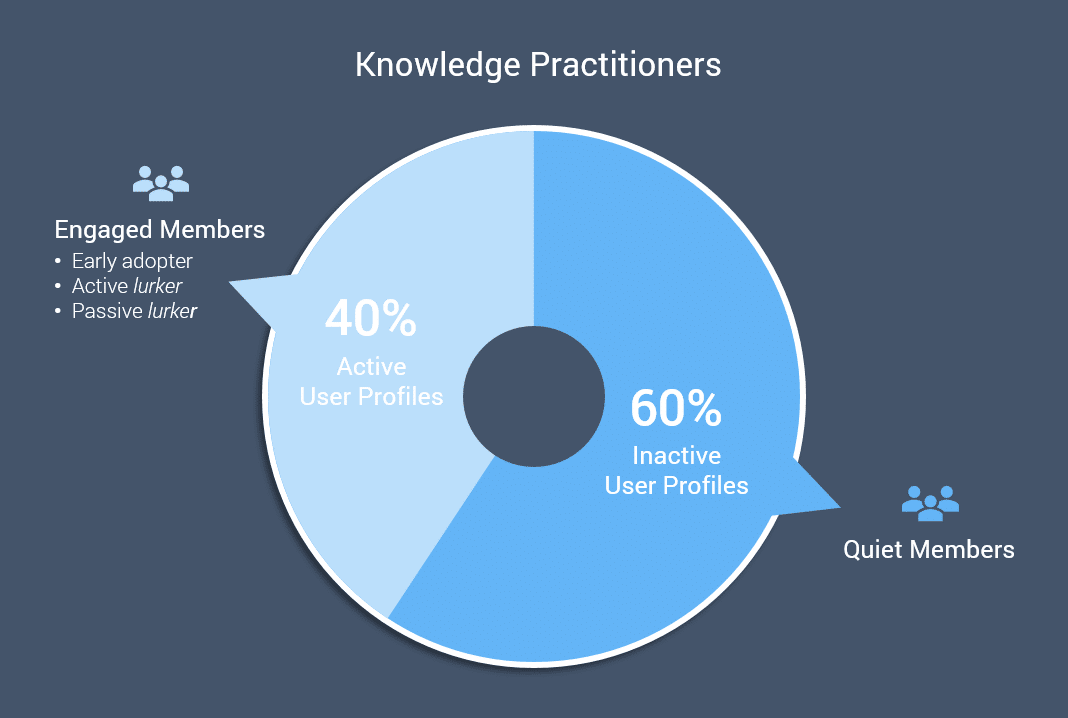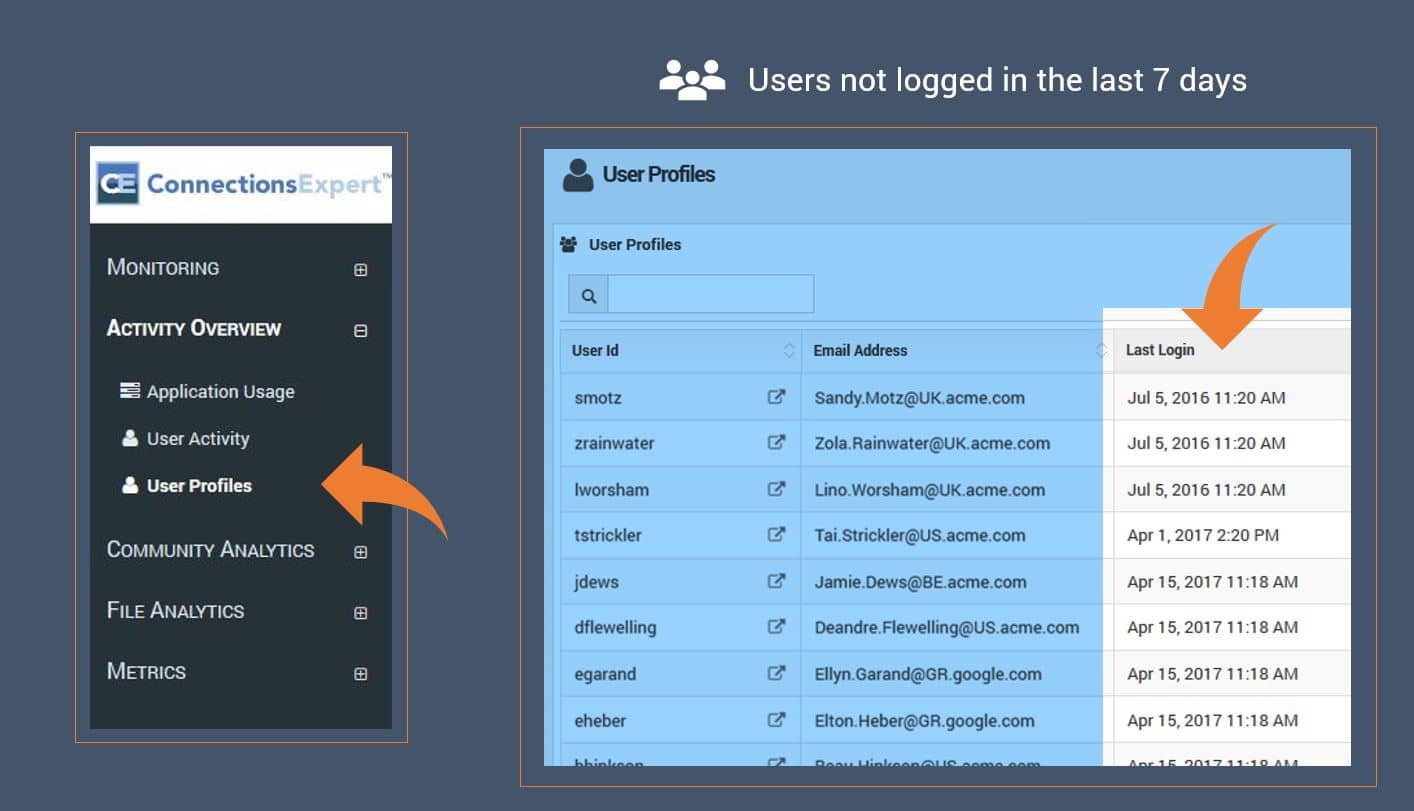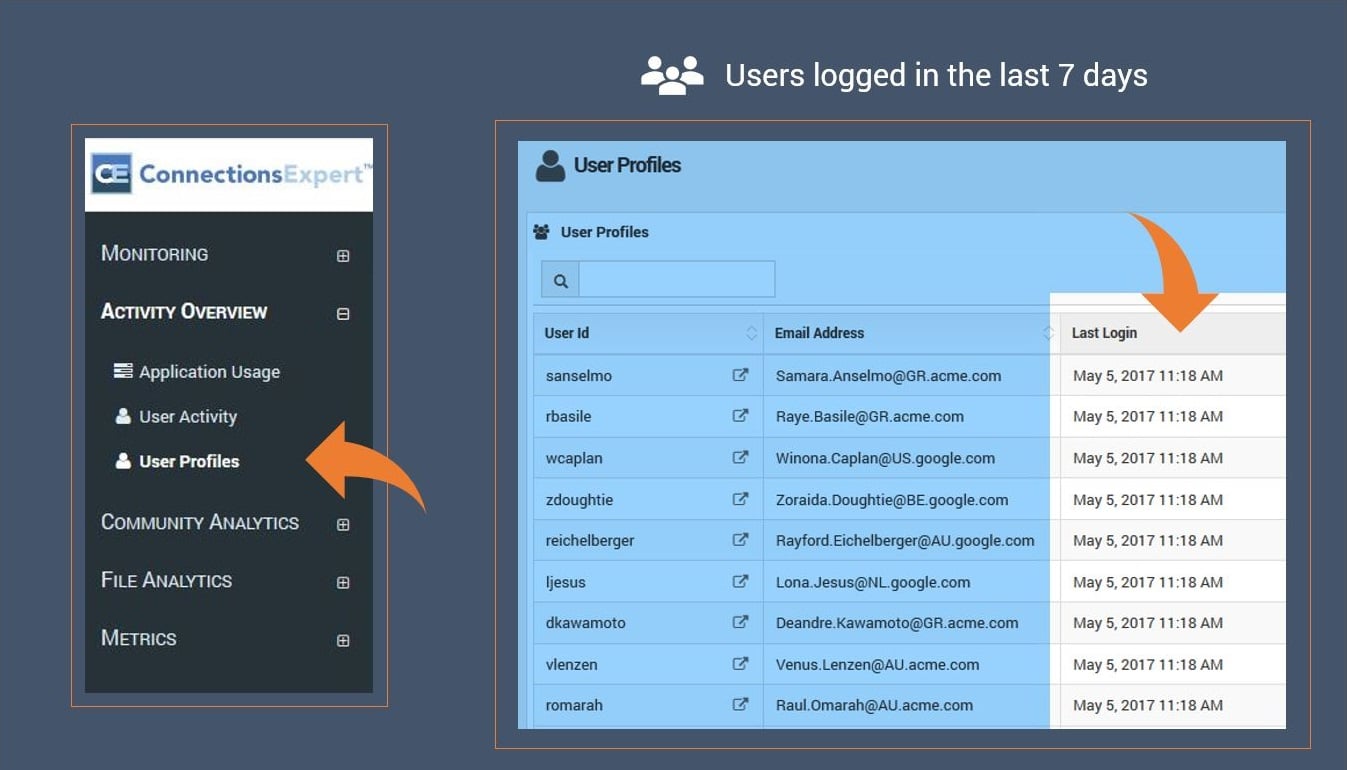Growth creates complexity, which requires simplicity
In my previous blog post ‘Facilitate Employee Engagement with Usage Analytics’ I described quick and easy steps to give you an idea about the status of your own Enterprise Social Network (ESN) utilization, simply by measuring the login numbers.
The login numbers are important as they provide a first impression of how knowledge practitioners within your organization utilize your ESN. Although they can help you understand current and future collaboration trends, they do not provide any additional information about the actual value add of the ESN.
Even with high adaptation rates (login numbers), you cannot be sure that organizational goals such as increased collaboration, productivity and innovation will be achieved. The numbers will however, help you determine the first relevant steps towards increasing adaptation rates.
Let’s take a look at 2 scenarios:
- Scenario 1: ~ 40% of employees log into the ESN within a week
- Scenario 2: ~ 95% of employees log into the ESN within a week
In this blog post, I will concentrate on scenario 1 while scenario 2 will be covered in the next blog post.
If 40% of employees logged into the system in a specific week, 60% of knowledge practitioners did not. Returning to my point from the introduction: Can we use these two values to make a well-founded statement about the type of cooperation and collaboration in a company and the ESN’s value creation?
I would say YES, as we can already start painting a picture.
Here is the good news – 40% of members visited your social networking platform. They are aware of the ESN as a source of information, collaboration, knowledge sharing and social networking.
Despite the well-known 90-9-1 rule, most of these engaged members, so called lurkers, will probably only view and consume information. But, there are also early adopters. They are active practitioners who share ideas and interact with other members, igniting the spark that lights up the social collaboration within your organization.
Social influence is heavily shaped by the early adopters. The more early adopters build up on an idea, product or service, the more people will follow suit. Soon they’ll be influencing new members to dive in on your behalf.
Amongst the lurkers, you can make a distinction between active and passive ones. The difference is that an active lurker will use and propagate the information gained in outside environments like emails, meetings, presentations or even during socializing (lunch, coffee break).
As such, all engaged members logging into your social networking platform are already adding value to your organization.
Harness the potential and power of word of mouth
Engaged members are your platform’s best salespeople. Focus your time and energy on this specific group as oppose to always trying to encourage new members. Word of mouth marketing can be a powerful way to supercharge your ESN adaptation rates and turn new members into active participants.
Not only do engaged members use acquired knowledge in their own work, but they also share it amongst their colleagues in their own offline network, while keeping the content in the community relevant.
Here is what you can do to keep up the momentum:
- ConnectionsExpert helps you identify active user profiles (logged in members) individually or as a group filtered by region or manager
- Support contributors and lurkers on their path to becoming evangelists and let them spread the word thus bringing in additional members
- Supporting lurkers by providing further training, may turn them into tomorrow’s contributors
- When it comes to user experience, don’t accept satisfaction, strive for absolute delight
- Share success stories with the whole network and encourage others to jump on board
One size does not fit all
Let’s consider the remaining 60%. Do you remember them? They are the knowledge practitioners that did not log into the platform at all. Should you simply ignore them and let early adopters persuade them to join? Please don’t.
A lack of use does not automatically mean a lack of interest. Your social networking evangelists already know that the list of reasons for not joining can be widespread. From not knowing about the social platform’s existence to potentially missing guidelines on how to use and embrace it more effectively. That’s why it’s critical to understand each of your employee’s motives in order to provide specific and relevant enablement programs for those who need it.
Employees adapt at their own pace; not yours. Adaptation is 80% behavior, mindset and culture as well as 20% technology. Focus your awareness campaign on modeling new behaviors and business practices rather than the mechanics of how to use the social networking platform.
Let me give you a simple but coherent example about how I adapted to an online shop and changed my shopping behavior based on the benefits:
- I didn’t even know the online shop existed: completely unaware
- I heard about it through marketing, but simply wasn’t interested in buying books online: aware but completely ignored it
- Friends shared their encouraging and positive shopping experiences with me: created an account, browsed their website
- Talked to others and asked for their rating: completed my first online purchase
- Delivery was just perfect and satisfying, learned about my benefits: completed my second purchase
- Ever since, I am a continuous customer and still enjoying my customer experience
The primary benefits that changed my attitude towards online shopping were:
- Trust – I realized online shopping works
- Variety – I find what I am looking for
- Convenience – I can safely buy anytime, anywhere
Now you may wonder what this has to do with adaptation to enterprise social networks?
Collaboration is about people. It depends on trust and realizing benefits. In the long run, people want to participate, to feel safe contributing, and to feel that participating will help them improve the way they work.
People can change with technology, you just need to guide them:
- ConnectionsExpert helps you identify inactive user profiles (not logged in members) individually or as groups filtered by region or manager
- Support the 60% by providing specific continuous training and coaching delivered by experienced adaptation experts
- Arrange some sort of orientation session for the employees
- Provide awareness and roll-out sessions on an on-going basis
- Showcase benefits based on real life success stories
- Connect them to early adopters
- Continuously measure adaptation rates and emerging trends
- Further tips and tricks can be found here
As you can see, everything is possible. There are no show stoppers. You just need to focus your energy, effort and hard work on the right measurements to achieve even higher digital adaptation rates. Every knowledge practitioner is invaluable to work on a single common goal: improve the way we learn, share, connect and get work done more effectively. That is the real value of your enterprise social networking platform.
What have you done today?
Coming up next
Let’s assume everyone, and I mean really everyone, within your organization logs into the system daily.
How can you tell whether everyone is using it to meet the organization’s goals? By looking at IBM Connections Community metrics, using ConnectionsExpert, you will be able to identify collaboration behaviors and trends within your own organization.
This will be covered in my next blog post “Facilitating Your IBM Connections Communities More Effectively using ConnectionsExpert”.




